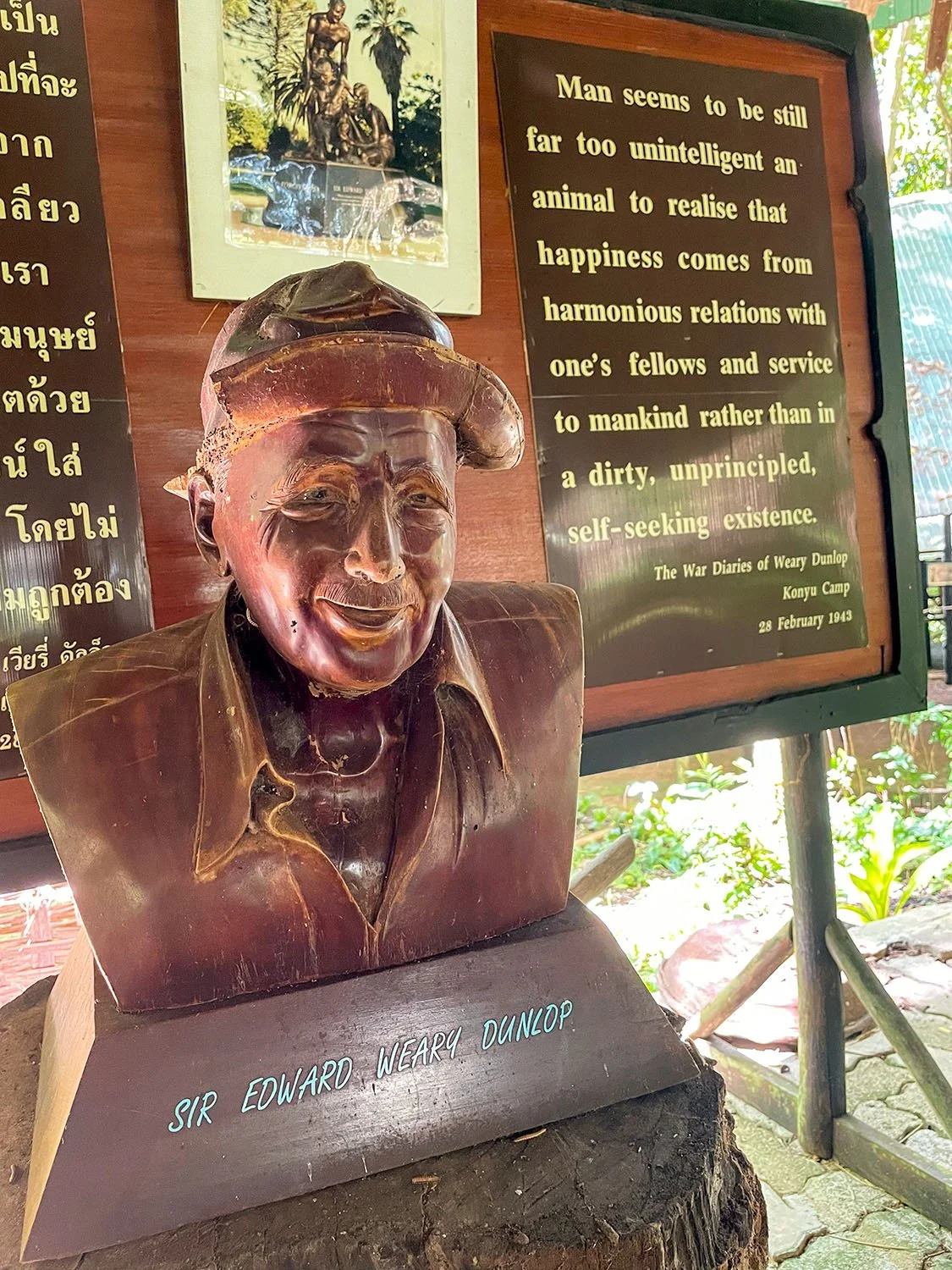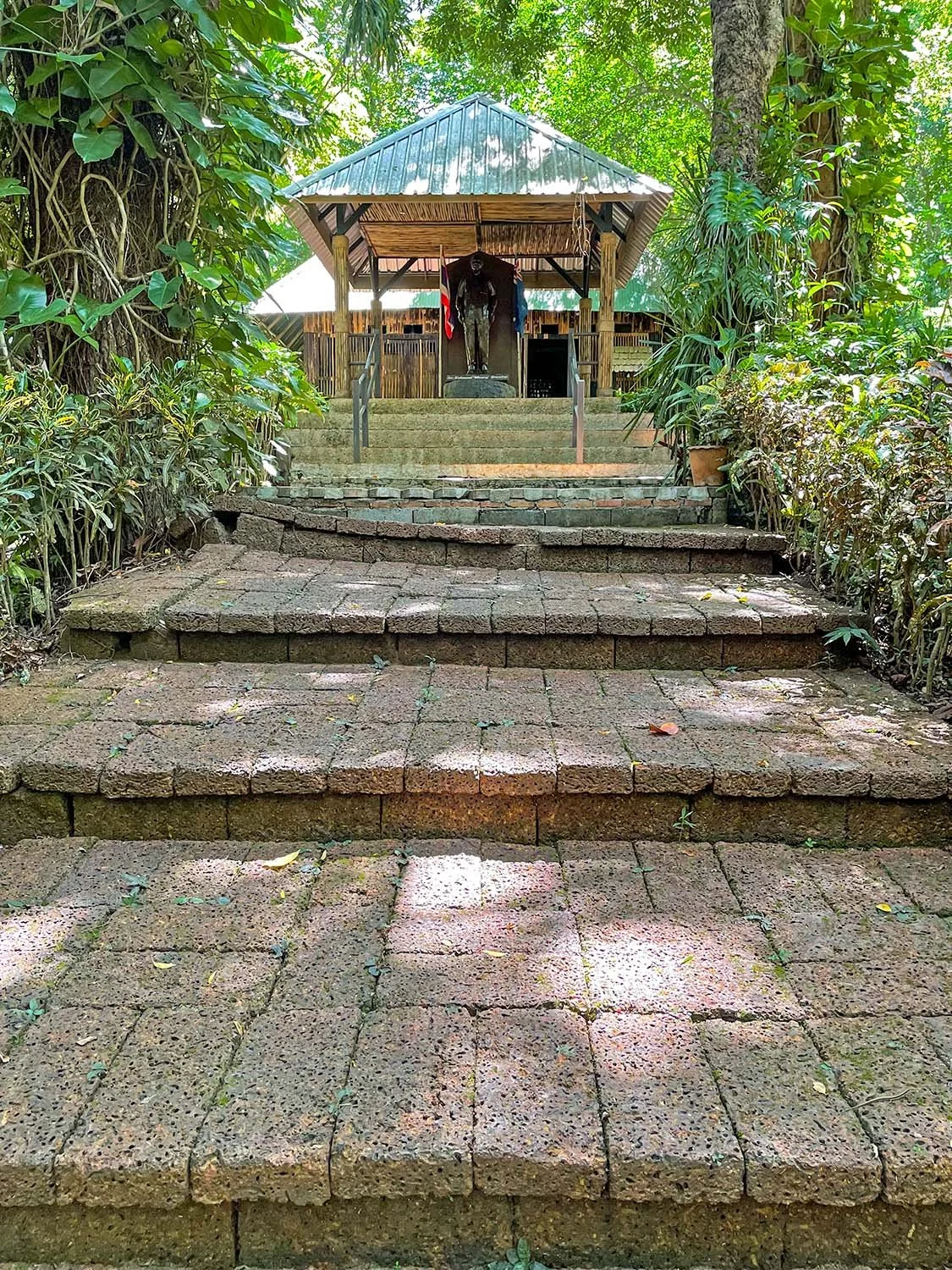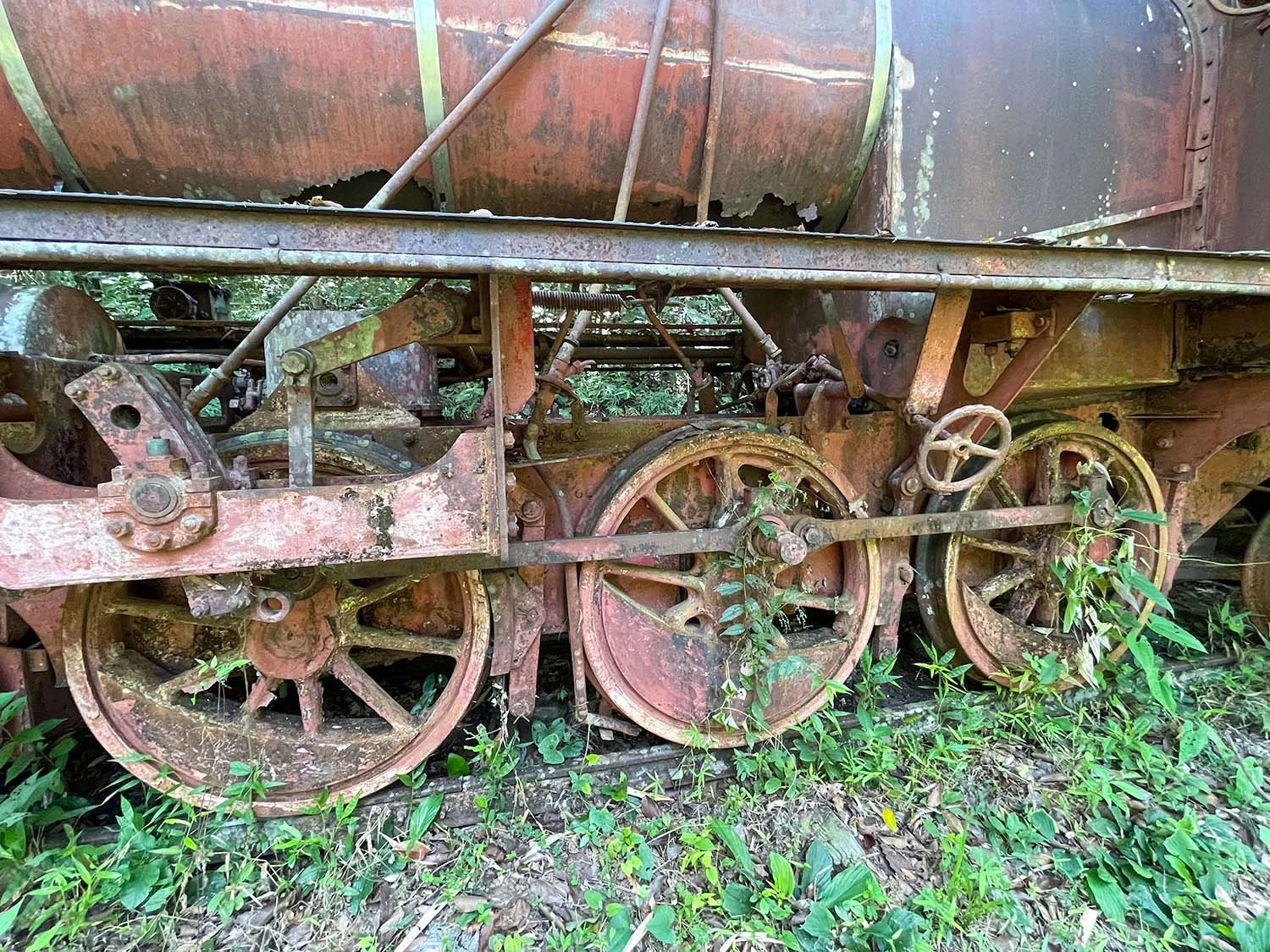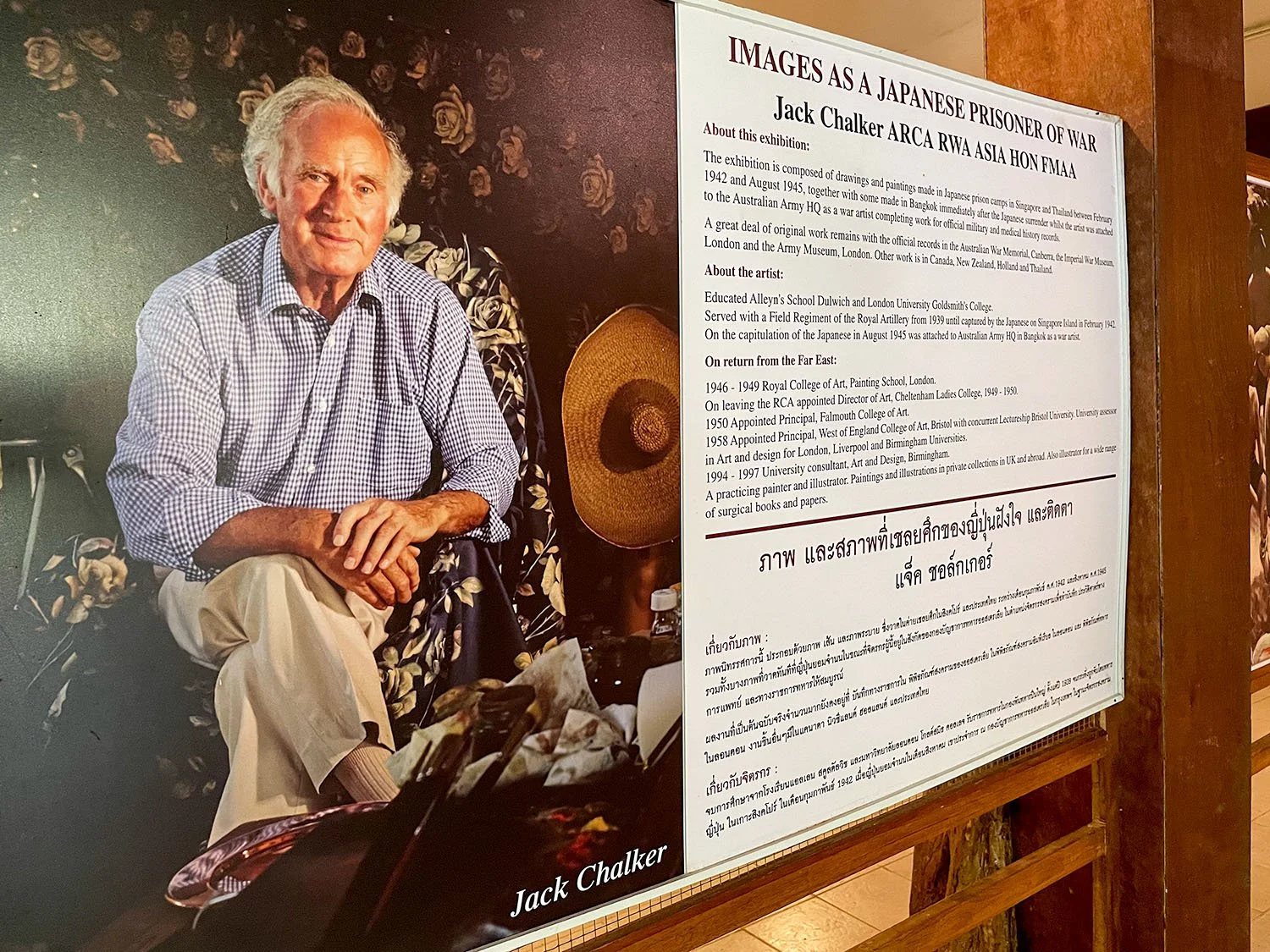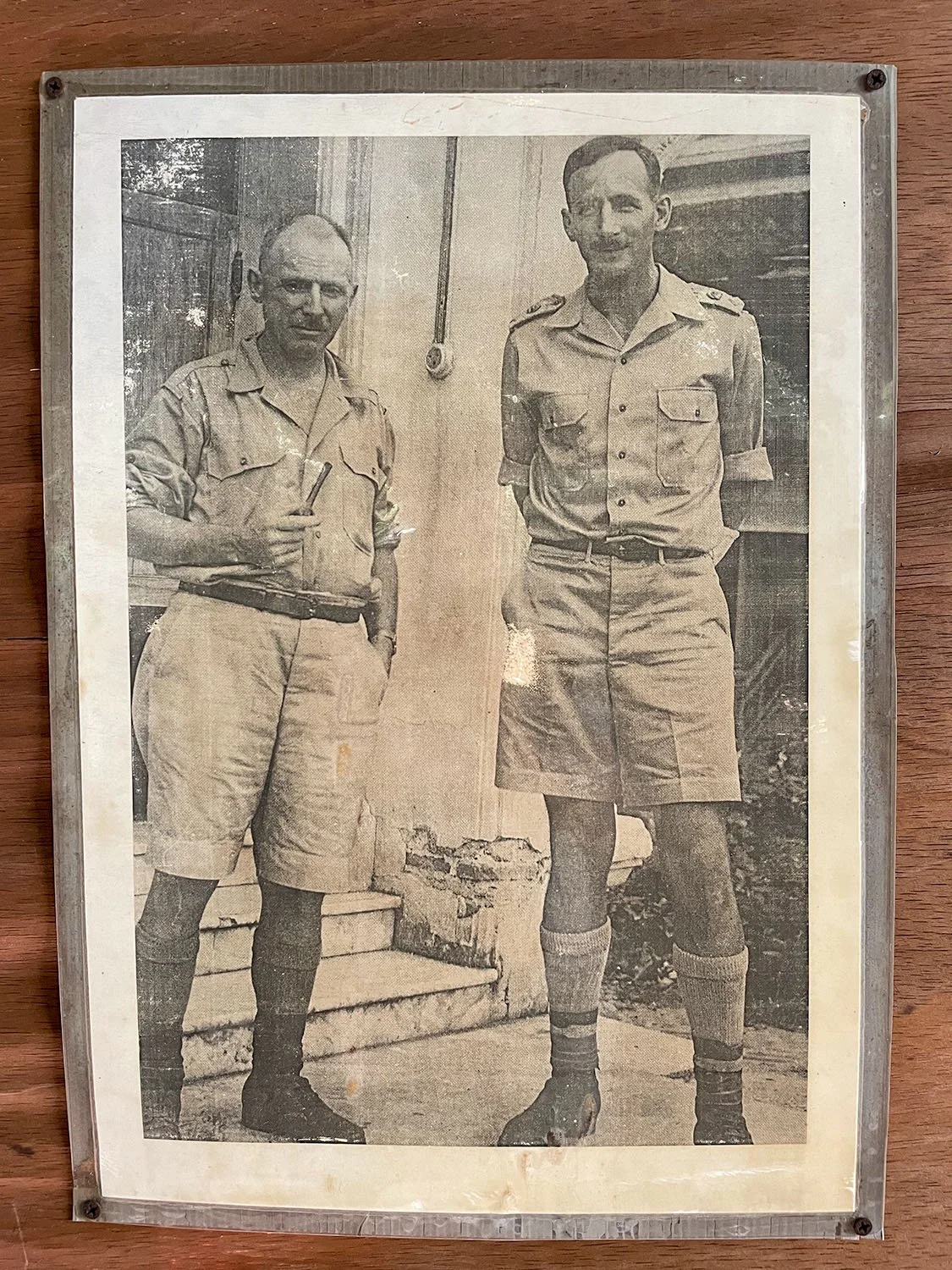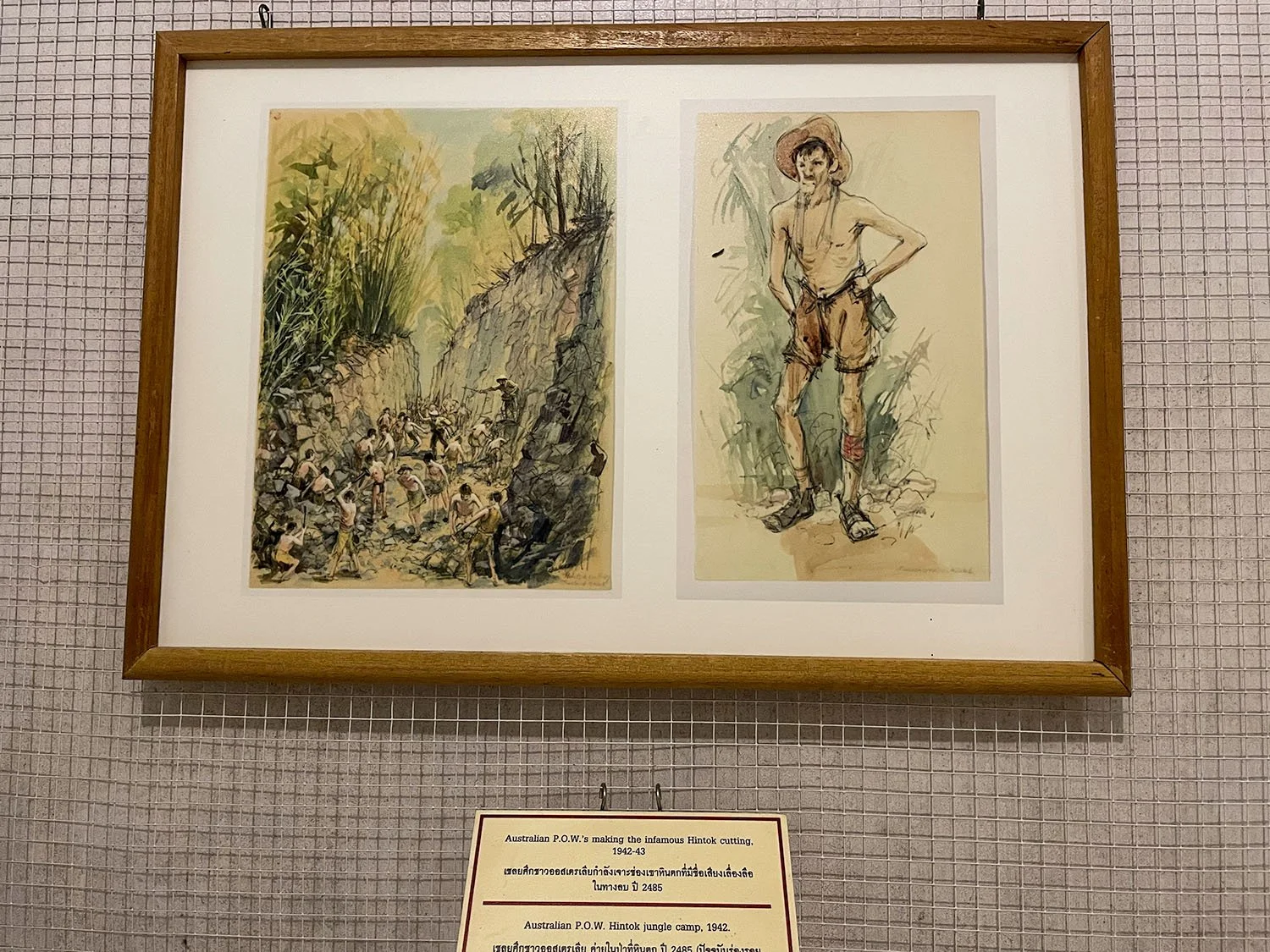A Sobering Visit to ‘Weary’ Dunlop Park in Sai Yok
During my week in Kanchanaburi province last month, whilst undertaking research for an article on the hot springs of Kanchanaburi, I stayed at a riverside resort called Home Phu Toey near Sai Yok. It’s about an hour’s drive upstream from the iconic ‘Bridge on the River Kwai’ and four kilometres downstream from the Australian Government’s Hellfire Pass Interpretive Centre.
Aside from being a very relaxing resort with its own hot spring and boating lake, its grounds contain the ‘Weary’ Dunlop Park. The name refers to Sir Edward Dunlop (whose nickname was ‘Weary’) who commanded a group of Australian POWs known as Dunlop Force which worked on the construction of the Thailand-Burma Railway in this area. ‘Weary’ became friends with Khun Kanit Wanachote, the original owner of Home Phu Toey, when he revisited the area after the war looking for the sites of the POW camps in which he served.
There is also a gallery of drawings by war artist Jack Chalker, whose paintings and drawings from the Japanese POW camps in WW2 vividly illustrate the atrocities that the Allied POWs had to endure on the construction of the railway.
There is a board in the gallery that tells the story of Jack’s friendship with ‘Weary’ and Khun Kanit, and how ‘Weary’ first met Khun Kanit. It reads as follows:
“In January 1943, Lieutenant Colonel Edward ‘Weary’ Dunlop commanded the first group of Australians, known as Dunlop Force, to work on the railway. The group had been brought to Thailand from Java and was initially located at Kanyu River Camp before being moved to Hintok Mountain and Hintok River Camps. During the terrible period until the railway was completed in October, Weary was hailed as a hero by the men he commanded. Not only was he their commander for much of this time, but he was also their dedicated medical officer. Later he spent time as a surgeon in Tha Sao and Chungkai Camps before moving to Nakhon Pathom.
In April 1985, survivors of Dunlop Force, headed by Keith Flanagan, brought Weary back to Thailand as a way of saying “thank you” for the sterling care of the POWs under his command. It so happened that at this time Khun Kanit Wanachote and his wife, Khun Oonjai, were living on a houseboat moored to the bank of the River Khwae Noi whilst work progressed on the development of Home Phu Toey. Some of the touring party, including Weary, were travelling upriver in long tail boats searching for the Hintok River campsite when they drew alongside Khun Kanit’s raft, whereupon he invited them to stop for a drink. Khun Oonjai provided the party with afternoon tea. Khun Kanit was delighted to meet such a distinguished man as ‘Weary’ Dunlop.
Over the year a strong friendship developed between Weary and Khun Kanit, and Home Phu Toey became a haven for further tours, particularly the ‘Quiet Lion Tours’ named in honour of Weary. In 1994, in accordance with his wishes, Weary’s ashes were returned to Thailand for scattering at Hellfire Pass. Some were also floated down the River Khwae from Home Phu Toey in a Loi Krathong ceremony attended by some five hundred guests. Soon after this, Khun Kanit announced to the Quiet Lion group that he had decided to devote a section of his property as a memorial to Weary Dunlop. In 1997 the ‘Weary’ Dunlop Museum was opened.
Jack Chalker was a member of the original tour party having formed a close friendship with Weary during the war and afterwards. Because Jack’s wartime drawings were used as a reference during the establishment of the memorial park at Home Phu Toey, Khun Kanit added to the park by creating the ‘Jack Chalker Gallery’. The gallery, displaying most of Jack’s wartime, paintings and drawings was opened in 2000.”
After the ‘Weary’ Dunlop Park was established, it became a sort of shrine for many of the ex-POWs who survived the construction of the railway, and for relatives and descendants of those who didn’t. Every ANZAC Day, Home Phu Toey would host groups of Australians who would travel to Sai Yok for a dawn service at Hellfire Pass.
In 2010, the Australian Government recognised the contribution that Khun Kanit had made to the preservation of Australian military history in Thailand by awarding him the Order of Australia (OAM) – an honour that is not often bestowed on non-Australian citizens. In April 2014, Khun Kanit passed away at the age of 86.
Since the death of Khun Kanit, there has been no further development to the Weary Dunlop Park, the museum and art gallery. Whilst the landscaped grounds have been maintained, there are a few areas that are showing signs of neglect, and many of the exhibits in the museum and art gallery are deteriorating because both buildings are open to the weather. Weeds are growing over the old ‘Death Railway’ train and the reconstructed POW hospital is in desperate need of some repairs.
I was given to understand that Home Phu Toey is still a family business (I assume that means the descendants of Khun Kanit – he had three daughters, two sons and many grandchildren), but without the presence of Khun Kanit, I wonder how long the ‘Weary’ Dunlop Park will survive in its present form. During the week that I was there, I saw nobody visit it, aside from myself.
If you are travelling from Kanchanaburi to the Hellfire Pass Interpretive Centre, then take the opportunity to also visit the ‘Weary’ Dunlop Park at Home Phu Toey. It’s only two kilometres off the main highway, about four kilometres before you reach the Interpretive Centre on the left-hand side. If you are not driving yourself, then ask your guide to arrange the short diversion. It will add an enhanced perspective to your visit to Hellfire Pass and help create some ‘traffic’ to the ‘Weary’ Dunlop Park. If only ten percent of the number of visitors to the Hellfire Pass Interpretive Centre also visited the ‘Weary’ Dunlop Park, I’m sure it would give the owners of Home Phu Toey the incentive to do more to maintain the park and ensure its long-term survival.
Following is a gallery of more photographs that illustrate the current state of the memorial park. Click on images to enlarge. (All images: © David Astley)


